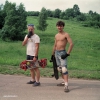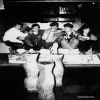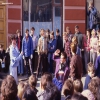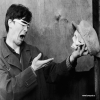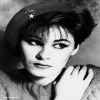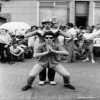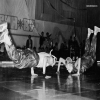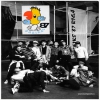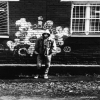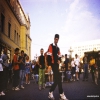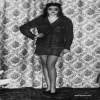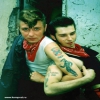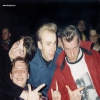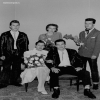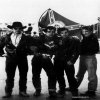
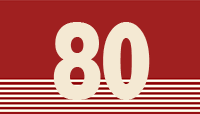
Street Styles
|
The issue of the subcultural dresscode is closely connected with the idea of lifestyle. But the declared lifestyle of the Soviet people always followed the simple formula “to live and work”, like the “Builders of Communism” ought to. Yet in the 80-s the USSR administrative system paid very little attention to social problems and leisure of the working people, confining itself to standard set of inelaborate social services and posters, drawing peoples attention to other things than their private life. The leisure was mostly defined by holidays, limited by paid vacation and the socialist camp countries. This state of things gave weird sprouts in form of barely controlled drinking and experiments with one’s appearance, generally each in his own fashion. All this complicated the work of the soviet photo-chroniclers, trying to reflect in historic catalogues “little delights” and fashion preferences of the population. The city-folk tried to wangle with what you could get under the counter or hand-sew using a pattern. The younger folk especially the students were forced to manoeuvre between the spivs (who actually reflected the casual style of that period) and their own opportunities, that also evades any legible definition because of the still present “deficit”. The most romantic and active students were suggested to put on tarpaulin coats and boots and to depart for the Komsomol construction sites and the amateur song club rallies where they were supposed to sing their bardic songs in “Chinese Red Guard” style accompanied by girls with a “free” make-up (usually expressed by black eye-liner and Polish rouge). The others were offered to put on sweaters, sprout a small beard (the soviet students were allowed to do it since the end of 70-s) and be visually in tune with the Beat movement, that had a bit different displays in the urban environment. The guiding marks in casual urban fashion were put by puritanic movies, television and pop-scene, where since the Olympics the new rhythms started to break through. Disco style, fed on the discotheques in Pioneer camps, trendy park-hotels and the first Eastland night variety shows, sprouted up in the dance culture domain, dominated so far by the classic and folk dance. By the end of 70-s the agitprop trains started coming to the Komsomol construction sites, the show-bill already included the modern dance, that could be cover for anything from jazz-dance to funk. After the Youth Festival in 1985 another thaw in youth policy has set in and the young were allowed to have their discotheques in cultural centres, youth cafes and student areas. Bollywood movies, seaside discotheques of the South and East-country, as well as the Italian Pop on television ultimately defined a term “disco” as everything that could be classified as “fashionable”. The future of the “Soviet casuals” from now on was determined by new wave music, things from the hard-currency shops and disk-jockeys from the student grounds of MPEI and other colleges. And is still determined by it. |

